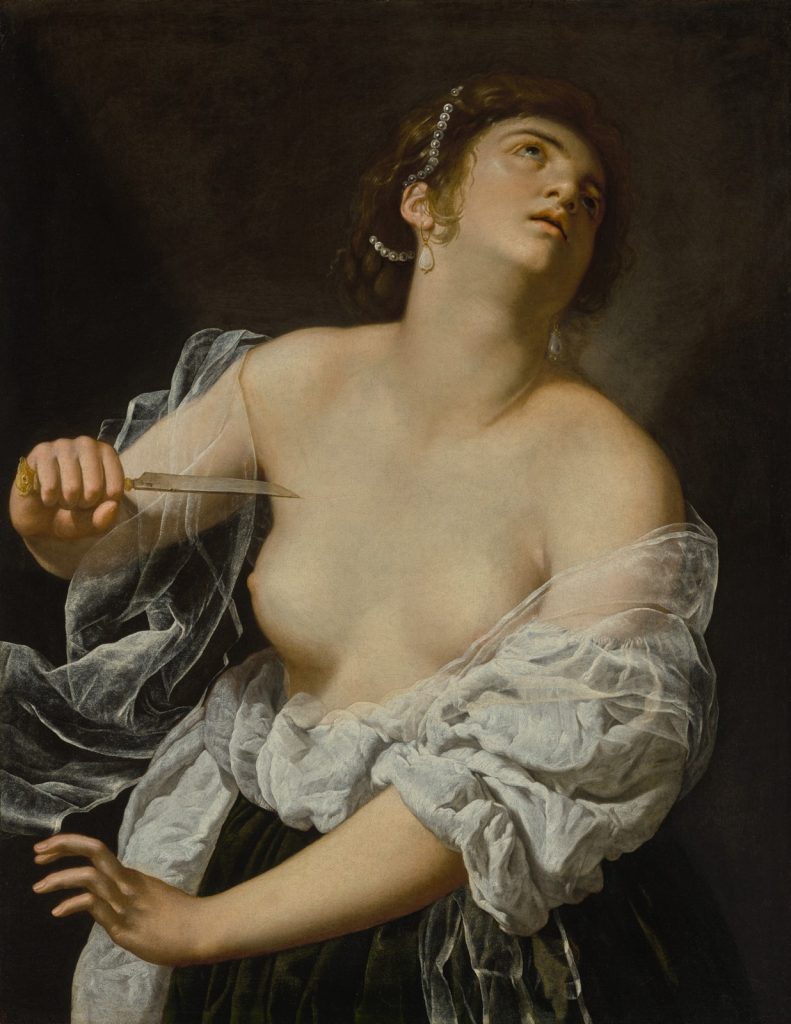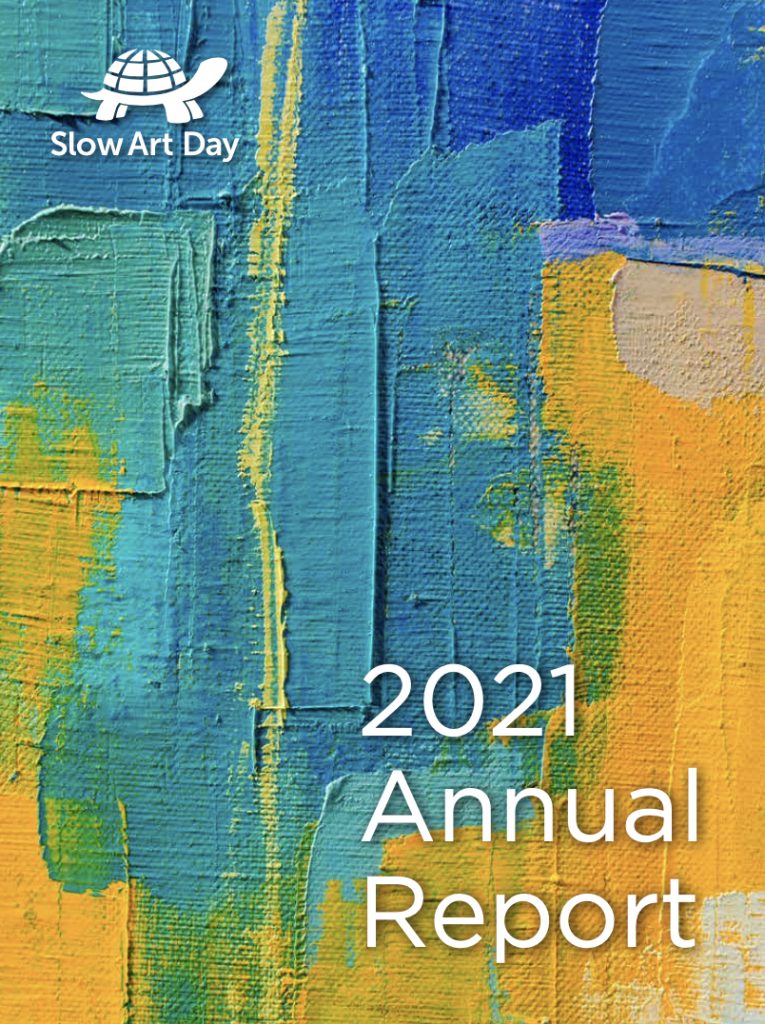Writing and talking about the art of slow looking can be difficult. Fortunately, Christopher Knight of the Los Angeles Times does it really well. And as we all get ready for Slow Art Day 2022, we can learn a lot from him.
A talented writer, Knight avoids ‘Art Speak’ and instead helps us slow down and look, as in this article, Baroque painter gets her due at last about the artist Artemisia Gentileschi and her painting Lucretia.
Knight looks slowly at her painting, Lucretia (below).

Here’s a great example of his observational (and writing) skills:
Light falls from murky darkness at the upper left, establishing a spectral diagonal exactly opposite to the figure’s spatial thrust toward the upper right. The dagger points directly to the place where the two diagonals cross. X marks the spot. Head tossed up and back, eyes fixed heavenward, Lucretia is about to stab herself to death.
In this passage above, he doesn’t give us a lesson on Baroque Art, he helps us see the light and dark; the composition; the position of the figure; the twist of the body; the grasp of the dagger; the contrast between the surface textures of skin, fabric and metal.
Most of all, he shows us that it’s all right there in the painting if we just slow down and look.
Final point I’ll make: Knight starts with the art and only after he has reviewed the work itself does he then get into the history, the patriarchy, and even the ‘discovery’ and celebration of Gentileschi as a Feminist icon. This is precisely how we want Slow Art Day participants to look – first at the art, then and only then might we move to a discussion about the history and theory.
Hope your planning is going well for Slow Art Day 2022.
This year I will be leading a Slow Art Day event looking at sculpture art in Heisler Park, which is a lovely outdoor park above the Pacific Ocean in Laguna Beach, California.
Hedy Buźan
Founding Host, Slow Art Day
Hedy Buzan is an artist and founding host of Slow Art Day. She also helped launch the Laguna Beach Sawdust Festival, an annual arts festival in Southern California.
Slow Art Day is committed to publishing posts like this from our hosts around the world. Here are some tips.


